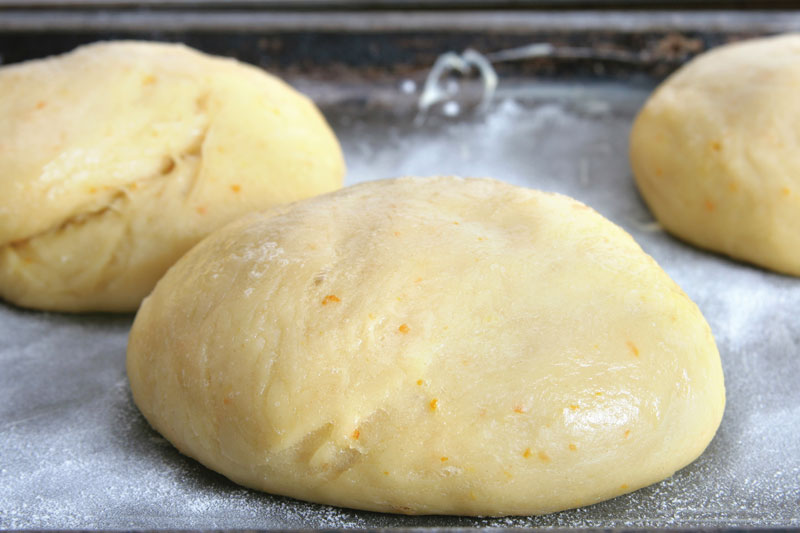- If you make mistakes in preparing refrigerated dough for your pizza, your oven tender will develop a needless attraction to the bubble popper.
- Here’s how to greatly reduce or eliminate your bubble troubles after removing the dough from the cooler.
Q: I keep having problems with bubbles in my refrigerated dough. What am I doing wrong?
A: Preparing refrigerated dough for use is a crucial step in the pizza making process. If it’s done wrong, your oven tender will develop a needless attraction to the bubble popper. After your dough has been stored in the cooler or retarder for 18 hours or more, it will have cooled down to about the temperature of the cooler’s interior. Once you remove the dough from the cooler, if you take it directly to the make table and then put it in the oven, the dough will exhibit a pronounced tendency to bubble up during baking.
What’s the solution? Once you bring the dough out of the cooler, keep it covered to prevent drying and let it temper at room temperature for upwards of 2½ hours or until the dough ball temperature reaches 50°F. Then you can take it to the make table for baking, and its propensity to bubble will be greatly reduced or even eliminated. Once the dough has reached the point where it can be opened easily and baked without bubbling, it’s typically good for use over the next three hours. Any dough not used within this window of time can be preopened, placed onto screens and stored on a wire tree rack in the cooler for use later in the day. (Make sure to cover these pizza skins after about 30 minutes in the cooler to prevent excessive drying.)
To use the preopened skins, remove the rack from the cooler, keeping it covered, and again allow the pizza skins to temper at room temperature for about 30 minutes. Then you can remove them from the screens, adjust the size and shape of the skins as needed, and take them to the make table in preparation for use.
Note: If you bake on a screen, be sure to remove the preopened skin from the storage screen and place it onto a baking screen; this will reorient the screen marks on the dough skin, thus reducing the probability that the dough will flow into the screen openings and expand upon baking, potentially locking the baked crust to the screen.
The late Tom “The Dough Doctor” Lehmann was the director of bakery assistance for the American Institute of Baking (AIB) and a longtime contributor to PMQ and consultant to the pizzeria industry. This article is reprinted from the December 2015 issue of PMQ.















